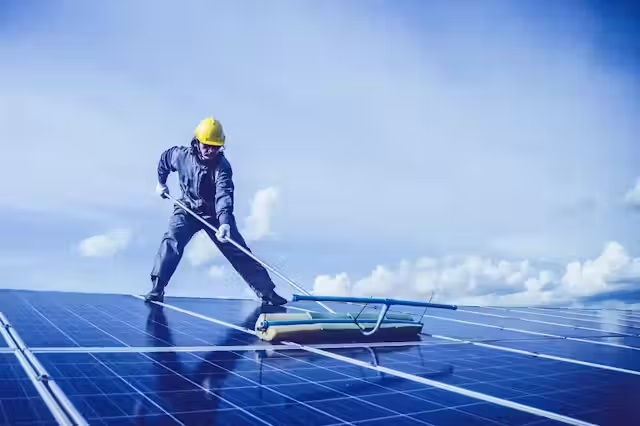Switching to solar energy with safety
- Sultan Kiani
- Jul 30
- 3 min read
//
Sultan Kiani
Pakistan is rapidly shifting to solar energy, which now reportedly generates more than 25% of the country’s utility power. As electricity prices climb and clean energy becomes more affordable, a growing number of citizens are opting for alternative sources.

While the transition to eco-friendly renewables is commendable, emerging safety issues call for public awareness. Electrocution, electrical fires, and falling panels are among the most common hazards linked to solar power systems. Let us take a closer look at some of the hidden hazards and how to manage them to ensure safety.
Risk of Electric Shock
A man was fatally electrocuted in a tragic incident that occurred in Kot Addu (Punjab) in July 2024. The accident happened after the victim touched an exposed solar power cable while operating a tube well. Such mishaps are increasing due to the rise in solar energy usage and limited public awareness of safety protocols. There is a common misconception that the low-voltage DC current from solar panels is not powerful enough to cause serious harm. While a single 12V panel may not be lethal, several connected PV panels can pose a serious electrocution hazard. Additionally, high-voltage DC from solar panels can be even more deadly than the AC power we receive from the grid.

The following safety precautions can help minimize the risk of electrocution from solar installations:
Treat all solar power cables as potentially energized. Avoid touching any wire with bare hands.
Always exercise caution during maintenance. Children or untrained individuals should not attempt to clean the solar panels.
It is advisable to clean solar panels just before sunrise or late in the afternoon, as washing during midday increases the risk of electric shock.
Ensure the main solar power switch is turned off before cleaning or performing any maintenance.
Safety gear can be life-saving in worst-case scenarios. Always wear fire-resistant clothing, insulated gloves and shoes, and a face shield when working on high-voltage solar systems.

Electrical Fire Hazards
Reports of solar systems catching fire are increasing, raising serious safety concerns. Improper installation and substandard equipment are primarily responsible for most solar-related electrical fires. Damaged or cracked solar panels can also trigger fires due to internal short-circuiting.
These practical safety steps can help protect both life and property:
Always hire a qualified professional for solar system installation and use high-quality, certified solar panels, inverters, charge controllers, cables, and other components. Installing a lightning arrester can protect your solar system from thunderbolt strikes.
For small-scale DIY solar installations, ensure you possess basic knowledge. Carefully read user manuals, watch instructional videos, and follow all safety guidelines.
The inverter (or charge controller) and battery storage should only be installed in well-ventilated areas to prevent overheating. Do not store flammable items near solar equipment, as they can turn a small fire into a massive blaze.
Regularly inspect your solar system. Look for signs of cracks on photovoltaic panels, warning beeps, smoke, or burning smells, and act accordingly.
Never attempt makeshift repairs or tamper with safety mechanisms to fix a fault. Shut down the system and call a certified technician for safe and proper repairs.
Always keep an electrical-rated fire extinguisher nearby—and ensure you know how to use it. If the fire spreads beyond control, immediately evacuate the premises and call 1122 to contact the fire department.
Wind Damage
Viral videos circulating on social media and news channels have shown solar panels being torn off rooftops by powerful wind gusts. Severe thunderstorms can rip panels from their mounts, sending them flying through the air. This serves as a stark reminder that strong and secure structures are critical to protecting solar panels from wind damage.
Key considerations when mounting rooftop solar panels include:
Ensure your installer is qualified to construct secure and durable mounting structures.
Check that the anchoring points are strong enough to support the mounting structure and can withstand high winds or storms.
Always use high-quality, rust-resistant brackets and bolts for solar panel installation.
Larger solar panels are more vulnerable to wind damage due to their surface area. Leaving small gaps between panels allows better airflow and reduces wind load.
Conduct periodic inspections to check for damage or wear. Loose bolts or rusted brackets should be repaired immediately to prevent accidents.
Installing wind deflectors alongside rooftop panel mounts provides added protection in areas prone to severe storms.




Comments